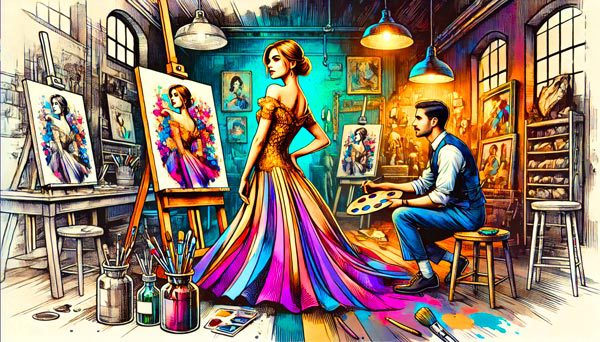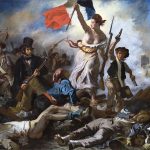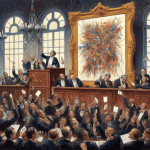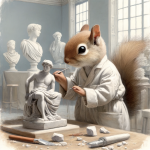

A startling piece of art, raw and controversial, stirs mixed reactions in a crowded gallery. Some viewers are captivated, while others are repelled, questioning whether what they see can even be considered art. This scene encapsulates the enduring debate over the role of beauty in art. Throughout history, beauty has often been seen as a crucial component of artistic expression, yet many modern and contemporary artists challenge this notion. So, does art really need to be beautiful, or can it fulfill its purpose through other means?
The concept of beauty in art has evolved dramatically over time. While classical and Renaissance artists emphasized aesthetic harmony and idealized forms, contemporary art often prioritizes emotional impact, conceptual depth, and social commentary over traditional notions of beauty. By examining historical perspectives, contemporary views, and the diverse functions of art beyond aesthetics, we can gain a deeper understanding of this complex and multifaceted question.
Historical Perspectives on Beauty in Art
In the classical era, beauty was synonymous with art. Greek and Roman artists aspired to create works that embodied ideals of symmetry, proportion, and harmony. The human form was celebrated in sculptures like the Venus de Milo, which epitomizes the classical ideal of feminine beauty. These standards influenced the architecture and decorative arts of the time, emphasizing balance and order.
The Renaissance marked a revival of classical beauty ideals, with artists like Michelangelo and Botticelli striving for anatomical accuracy and perfect proportions. Michelangelo’s David is a testament to the Renaissance pursuit of idealized beauty, showcasing the human body in its most perfected form. Similarly, Botticelli’s The Birth of Venus captures an ethereal beauty that blends classical mythology with Renaissance humanism.
The Baroque period introduced a different kind of beauty, characterized by emotional intensity and dramatic compositions. Caravaggio’s use of chiaroscuro, a technique that contrasts light and dark to create a sense of depth and volume, brought a new level of realism and emotional impact to his paintings. This period saw a shift from the restrained beauty of the Renaissance to a more dynamic and expressive approach.
By the 19th century, the definition of beauty in art began to expand. Romanticism celebrated the sublime and the emotional, with artists like Caspar David Friedrich capturing the awe-inspiring power of nature. Realism, led by artists like Gustave Courbet, turned its focus to everyday life, finding beauty in the mundane and the ordinary. This era laid the groundwork for the avant-garde movements of the early 20th century, which would challenge and redefine artistic beauty.
Contemporary Views in Beauty in Art
The advent of modernism in the early 20th century marked a radical departure from traditional beauty standards. Artists like Pablo Picasso and Wassily Kandinsky embraced abstraction, prioritizing innovation and concept over representational beauty. Picasso’s Cubist works, for instance, deconstructed the human form into geometric shapes, challenging viewers to reconsider their perceptions of beauty and reality.
Abstract art further pushed the boundaries, with artists like Jackson Pollock and Mark Rothko focusing on form, color, and emotional expression. Pollock’s action paintings, characterized by vigorous drips and splatters, emphasized the process of creation rather than the final product. Rothko’s color field paintings, with their large, immersive swaths of color, sought to evoke deep emotional responses, transcending traditional notions of beauty.
Postmodernism in the latter half of the 20th century questioned the very idea of beauty as a primary criterion for art. Conceptual artists like Marcel Duchamp and Joseph Kosuth argued that art’s value lies in its ideas and messages rather than its aesthetic appeal. Duchamp’s Fountain, a readymade urinal presented as art, challenged viewers to reconsider their definitions of art and beauty. Kosuth’s One and Three Chairs explored the relationship between language, representation, and reality.
Contemporary art continues to challenge traditional beauty standards, often prioritizing experience, social critique, and personal expression. Artists like Damien Hirst and Tracey Emin create provocative works that elicit strong reactions, both positive and negative. Hirst’s installations, featuring preserved animals and pharmaceutical motifs, confront themes of life, death, and consumerism. Emin’s autobiographical works, like her famous unmade bed, offer raw and intimate glimpses into her personal life, challenging conventional aesthetics.
The Functions of Art Beyond Beauty
Art serves many functions beyond mere aesthetic pleasure. One of its primary roles is as a medium for personal and emotional expression. Artists often use their work to convey inner turmoil, joy, grief, or other intense emotions. Frida Kahlo’s deeply personal paintings, filled with symbolism and vibrant colors, offer insight into her physical and emotional pain. Edvard Munch’s The Scream captures a moment of existential angst, resonating with viewers on a profound emotional level.
Art also acts as a powerful tool for social and political commentary. Throughout history, artists have used their work to raise awareness about societal issues and prompt social change. Ai Weiwei’s installations, often critical of the Chinese government, highlight issues of censorship, human rights, and freedom of expression. Banksy’s street art, with its satirical and often politically charged messages, challenges viewers to question authority and societal norms.
Beyond expression and commentary, art reflects cultural and historical contexts, capturing the essence of its time and place. Traditional African masks, for example, are not only beautiful objects but also carry deep cultural and spiritual significance. Indigenous Australian art, with its intricate patterns and stories, connects past and present, preserving cultural heritage. These culturally specific aesthetics often diverge from Western beauty standards, emphasizing the diversity of artistic expression.
Innovation and experimentation are also crucial aspects of art. The drive to push boundaries and explore new ideas often results in works that challenge traditional beauty norms. Marina Abramović’s performance art, which often involves physical endurance and audience participation, redefines the relationship between artist and viewer. Her work emphasizes the experience and the conceptual over conventional aesthetics, illustrating the evolving nature of art.
The Subjectivity of Beauty in Art
Philosophical perspectives on beauty highlight its subjective nature. Plato viewed beauty as an objective ideal, a perfect form that transcends the physical world. In contrast, Immanuel Kant argued that beauty is a subjective experience, shaped by individual perception and cultural context. Friedrich Nietzsche further challenged traditional views, suggesting that beauty is a human construct, often linked to power and societal norms.
Personal experiences and cultural backgrounds play significant roles in shaping our perceptions of beauty. What one person finds beautiful may be unremarkable or even ugly to another. Cultural influences, from traditional art forms to contemporary media, also impact our aesthetic preferences. The vibrant colors and patterns of Mexican folk art, for example, might appeal to some viewers but seem overwhelming to others accustomed to more subdued palettes.
The rise of social media and digital platforms has further complicated notions of beauty. Platforms like Instagram and Pinterest allow for the rapid dissemination of images, shaping contemporary aesthetics and influencing public taste. While this democratization of art provides a platform for diverse voices, it also creates homogenized beauty standards, driven by trends and algorithms.
Despite these challenges, the proliferation of digital art and online galleries has expanded our understanding of beauty. Artists from diverse backgrounds can share their work with global audiences, challenging traditional Western-centric beauty standards. The accessibility of digital tools has also democratized art-making, allowing anyone with a smartphone or computer to create and share their work, further broadening the definition of beauty in art.
Case Studies and Examples
Francis Bacon’s work provides a compelling case study of art that defies conventional beauty. Bacon’s grotesque and often disturbing paintings explore themes of violence, sexuality, and existential dread. His raw, visceral style, characterized by distorted figures and dark color palettes, challenges viewers to confront the darker aspects of human experience. Despite—or perhaps because of—its unsettling nature, Bacon’s work is celebrated for its emotional intensity and psychological depth.
Yayoi Kusama’s installations offer a different take on non-traditional beauty. Kusama’s immersive environments, filled with polka dots and mirrors, create a sense of infinite space and playfulness. Her work, influenced by her experiences with mental illness, transforms obsessive patterns into mesmerizing visual experiences. Kusama’s installations invite viewers to lose themselves in the art, challenging the notion that beauty must be serene or restrained.
Jean-Michel Basquiat’s art combines raw expression with cultural commentary, challenging traditional beauty standards. Basquiat’s graffiti-inspired paintings incorporate text, symbols, and vibrant colors to explore themes of identity, race, and power. His work reflects the energy and complexity of urban life, rejecting polished aesthetics in favor of a more immediate and visceral style. Basquiat’s art is a testament to the power of raw, unfiltered expression.
These examples illustrate that art does not need to conform to traditional beauty standards to be impactful or meaningful. Whether through emotional intensity, immersive experiences, or cultural commentary, these artists challenge us to expand our understanding of what art can be. Their work highlights the diverse ways art can engage, provoke, and inspire, beyond conventional notions of beauty.
Conclusion
The debate over whether art needs to be beautiful is complex and multifaceted. By examining historical perspectives, contemporary views, and the diverse functions of art, we can see that beauty is but one of many criteria by which art can be judged. From classical ideals of harmony and proportion to modern and contemporary challenges to those standards, art’s evolution reflects broader cultural and philosophical shifts.
Art serves numerous purposes, from personal expression and social commentary to cultural preservation and innovation. These functions often transcend traditional aesthetics, demonstrating that beauty, while important, is not the sole determinant of art’s value or impact. The subjectivity of beauty, shaped by individual and cultural perspectives, further complicates the notion of a universal standard.
Ultimately, art’s power lies in its ability to engage, provoke, and inspire. Whether through traditional beauty or other forms of impact, art connects with viewers on multiple levels. As we continue to explore and appreciate diverse artistic expressions, we enrich our understanding of what art can be and how it can shape our world.







